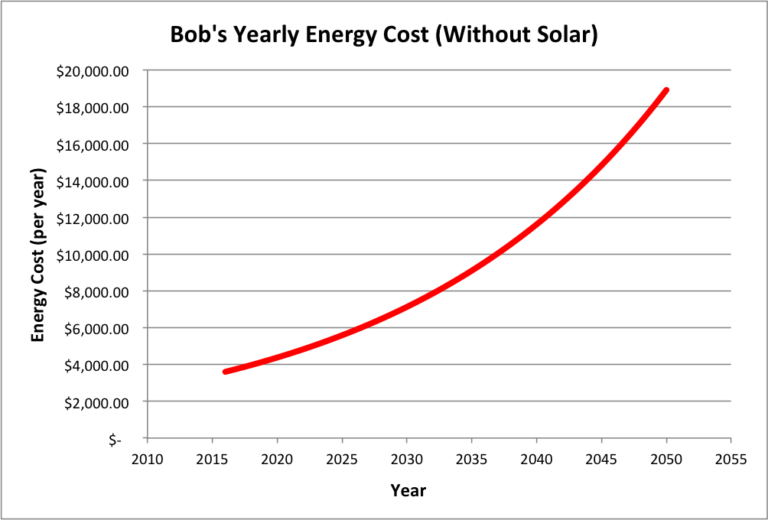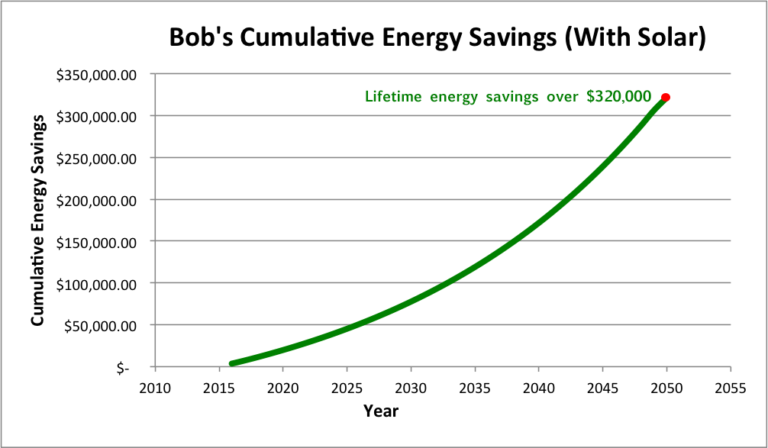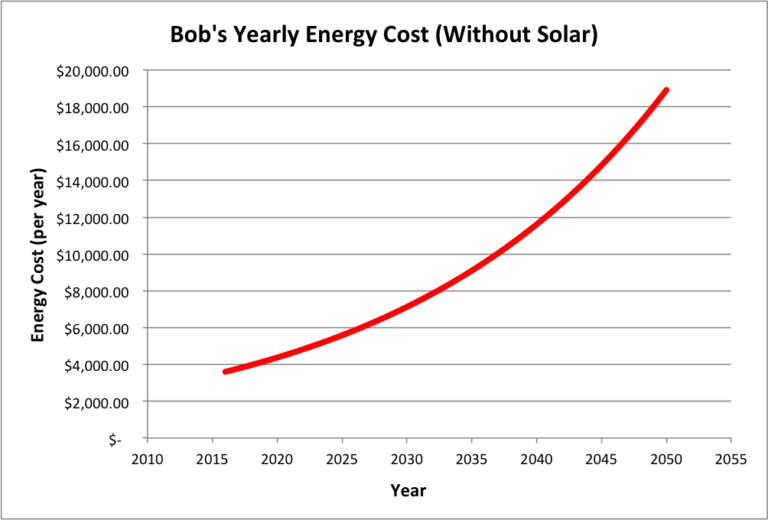Understanding Payback Periods
With the cost of solar panels decreasing at a rapid rate, there is no better time than now to go solar and save thousands of dollars on energy bills.

Figure 1: Rising cost of electricity, increasing annually by a small percentage.
But a big reason that some people choose not to go solar is that they worry about the time it will take for them to recoup their cost. This time is called a payback period. There is a common misconception that the payback period for someone that switches to solar is very long. But that is simply not true—in fact, with solar prices at where they are now, payback periods are at an all-time low. If you buy a system for your home today, you will fully recoup your cost in about 5 years. After purchasing your solar panel system, you will be able to crank up your AC for the next 35 years without paying a dime on your energy bills*.
So how come payback periods are so short? There are two reasons for this. First and foremost, solar panels are cheaper than ever. The second reason has to do with the fact that energy companies increase their prices by 3-5% every year. In other words, the cost of not going solar is constantly increasing. By purchasing a solar panel system, the amount you will be saving will increase each year as energy prices rise, and so your payback period will actually be a lot shorter than you may expect.

Figure 2: Increasing yearly savings on energy bills due to solar installation.
To help you fully understand the concept of payback periods, let’s walk you through a hypothetical scenario. Suppose Bob’s monthly energy bill is $300 per month. He is currently paying $3,600 per year on energy. With the increasing energy prices, Bob would be paying almost $4,500 in the year 2020. This annual cost will continually increase at an exponential rate. With compounding, by the year 2050 Bob will be paying nearly $20,000 a year on energy bills (Fig. 1).
Now suppose that Bob makes the economically savvy decision to go solar. In the year 2017, he will pay $0. In the year 2020, he will pay $0. And even in the year 2050, he will be paying $0 (Solar panels last 35-40 years).** Over the life of the panels, he will have saved well over $300,000 (Fig. 2).
Suppose the solar panel system cost him $25,000. He will receive a 30 percent Income Tax Credit from the government, so he will only have to pay $17,500 for the system. By looking at Fig. 2, we can see that Bob’s cumulative energy savings will surpass the cost of the panels in the year 2019. Therefore, we can conclude that his payback period will be about 4 years.
*Solar Panels last about 35-40 years; assumes your solar package is large enough to support your energy usage.
**Tax and delivery charges still apply and are minimal.




